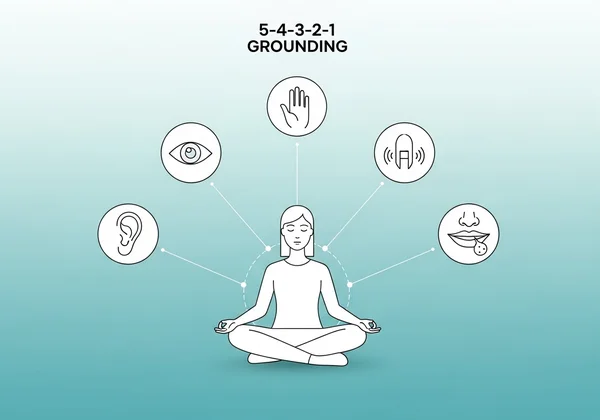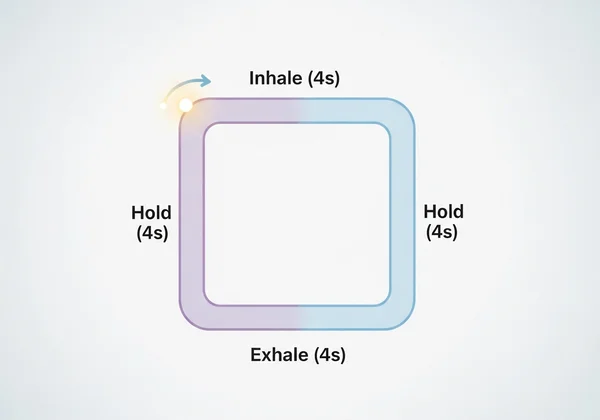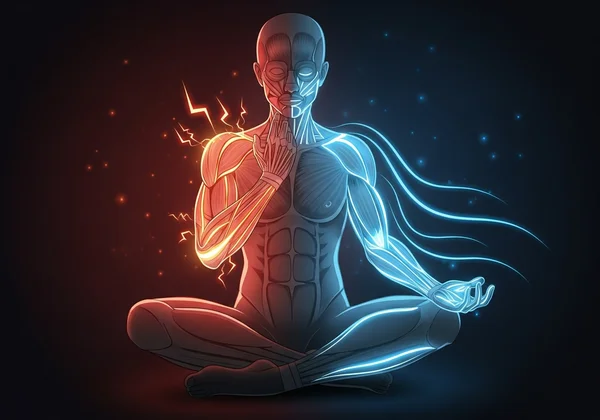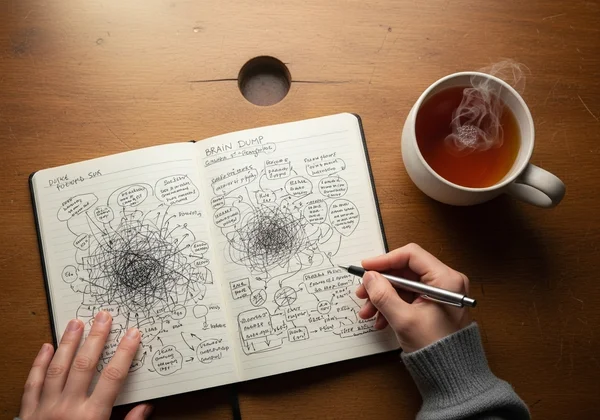What to Do After Your GAD7 Test: 5 Simple Anxiety Management Techniques
Feeling overwhelmed by worry, racing thoughts, or a constant sense of dread? You're not alone, and it's brave to seek answers. When your mind is caught in a loop of "what ifs," the most pressing question becomes how to reduce anxiety right now. Whether you've just taken a GAD-7 assessment or are simply trying to understand your feelings, knowing what to do in the moment is crucial. This guide provides five simple, evidence-based techniques you can use immediately to manage anxiety symptoms and find a moment of calm. While these are tools for immediate relief, the first step towards long-term understanding is often to get a baseline understanding of your symptoms.
Understanding Anxiety Management Techniques
Before diving into the "how," let's briefly touch on the "why." Anxiety isn't just "in your head"; it's a full-body experience. Your brain's alarm system, designed to protect you from danger, can sometimes become overactive. This triggers a cascade of physical responses: a racing heart, shallow breathing, and tense muscles. The goal of many anxiety management techniques is to interrupt this physical cycle. By calming your body, you send a powerful signal back to your brain that the perceived threat has passed, allowing your mind to follow suit. These methods empower you to regain a sense of control when you feel powerless.
How Calming Your Body Calms Your Mind
When you're anxious, your body is in "fight-or-flight" mode, managed by the sympathetic nervous system. It's preparing you for action. Techniques like deep breathing and grounding activate the opposing system: the parasympathetic nervous system, or the "rest-and-digest" state. This transition is what creates the feeling of calm. You are intentionally shifting your physiological state to quiet the mental noise.
Technique 1: Use Grounding Techniques for Anxiety
When anxiety pulls you into a whirlwind of future worries or past regrets, grounding anchors you firmly in the present moment. It's a powerful way to stop the spiral by redirecting your focus to your immediate physical surroundings. By tuning into your senses, you interrupt the flow of anxious thoughts and remind your brain that you are safe right here, right now. This is one of the most effective ways to manage a sudden wave of panic or unease.
The 5-4-3-2-1 Method: A Step-by-Step Guide
This technique is simple, discreet, and can be done anywhere. Pause and gently notice the following:
-
5 things you can SEE: Look around and name five objects in your sight. Notice their color, shape, and texture. (e.g., "I see my blue pen, the wood grain on the desk, a crack in the ceiling...")
-
4 things you can FEEL: Bring your attention to the physical sensations. (e.g., "I feel the soft fabric of my sweater, the smooth surface of my phone, my feet flat on the floor...")
-
3 things you can HEAR: Listen carefully and identify three distinct sounds. (e.g., "I hear the hum of the computer, a bird chirping outside, the distant sound of traffic...")
-
2 things you can SMELL: Take a deep breath. Can you identify two scents? (e.g., "I can smell my coffee, the scent of a book...")
-
1 thing you can TASTE: What is the taste in your mouth? You could also take a sip of water or chew a piece of gum to focus on a new taste.

Why Engaging Your Senses Works
Anxiety thrives on abstract thought and worry. You can't see, touch, or hear a "what if" scenario. By deliberately engaging your senses, you force your brain to process concrete, real-time information. This mental shift creates distance from the anxious thoughts, giving you the headspace needed to calm down. After trying this, you may want to better understand your anxiety patterns with a free, confidential GAD-7 assessment.
Technique 2: Control Your Breath to Reduce Anxiety
Your breath is one of the most powerful and portable tools you have for managing anxiety. When you're anxious, your breathing often becomes rapid and shallow, which can lead to dizziness and an increased heart rate, further fueling the cycle of panic. By consciously slowing and deepening your breath, you can directly influence your body's stress response and signal that it's time to relax. This is a foundational skill for anyone looking to actively manage their anxiety.
Practice Box Breathing for Instant Calm
Box breathing, also known as four-square breathing, is a simple and effective technique used by everyone from nurses to navy SEALs.
-
Sit comfortably with your back straight. Exhale all the air from your lungs.
-
Inhale slowly through your nose for a count of four.
-
Hold your breath for a count of four.
-
Exhale slowly through your mouth for a count of four.
-
Hold the empty breath for a count of four. Repeat this cycle for 1-2 minutes, or until you feel a sense of calm returning.

The Science Behind Anxious Breathing
The rhythm of your breath is directly linked to your nervous system. Short, shallow breathing is part of the "fight-or-flight" response. By intentionally slowing your breath, you manually activate your parasympathetic nervous system, which lowers your heart rate and blood pressure. You are essentially telling your body, "Everything is okay," which helps quiet the anxious mind. Learning to control your breath is a key step, and so is understanding your score on a validated screening tool.
Technique 3: Release Physical Tension After a High GAD7 Score
Anxiety often causes us to clench our muscles without even realizing it—think of a tight jaw, hunched shoulders, or a knotted stomach. Progressive Muscle Relaxation (PMR) is a technique that involves systematically tensing and then releasing different muscle groups. This process helps you not only release built-up physical tension but also become more aware of where you hold stress in your body.
A Simple Guide to Progressive Muscle Relaxation
Find a quiet place to sit or lie down. Start with your feet and work your way up.
-
Feet: Curl your toes tightly for 5 seconds. Feel the tension. Then, release completely for 10 seconds and notice the difference.
-
Legs: Tense your calf muscles, then your thighs, for 5 seconds. Release and notice the feeling of heaviness and relaxation.
-
Hands & Arms: Clench your fists and tense your biceps for 5 seconds. Release.
-
Stomach & Chest: Tighten your abdominal muscles for 5 seconds. Release.
-
Shoulders & Neck: Pull your shoulders up towards your ears for 5 seconds. Release them completely.
-
Face: Scrunch your face, clenching your jaw and eyes, for 5 seconds. Release and let your jaw hang loose.

Noticing and Releasing Stored Stress
The real magic of PMR is in the release. By contrasting deep tension with deep relaxation, you learn what relaxation truly feels like. This practice builds your interoceptive awareness—your ability to sense your body's internal state—making it easier to spot and release tension before it escalates.
Technique 4 & 5: Two Mindful Ways of Coping with Anxiety
Releasing physical tension is a huge step. Now, let's explore two gentle ways to calm the source of that tension—your thoughts themselves. This is about creating a little more peace inside your mind. Mindfulness teaches us to observe our thoughts without getting swept away by them. It's about creating a space between you and your anxious feelings, giving you the power to choose how you respond.
Observe Your Thoughts: The "Leaf on a Stream" Exercise
Find a comfortable position and close your eyes. Imagine yourself sitting beside a gently flowing stream with leaves floating on the surface. As a thought or feeling enters your mind, place it on a leaf and watch it float by. Don't push it away or analyze it; simply acknowledge it and let it go. The goal isn't to have an empty mind, but to practice non-judgmental observation.
Externalize Your Worries: The "Brain Dump" Journal
Sometimes, anxious thoughts feel overwhelming because they're swirling endlessly in your head. A "brain dump" involves taking 5-10 minutes to write down everything you're worried about, no matter how big or small. Don't worry about grammar or structure. The physical act of getting the thoughts out of your head and onto paper can provide immense relief. It externalizes the problem, making it feel more manageable and less a part of you. This practice can clarify what's really bothering you, which is a great precursor to taking a GAD-7 online test.

Your First Steps to Managing Anxiety
These five techniques are powerful tools for your mental health first-aid kit. They can provide immediate relief when you feel overwhelmed. Remember that managing anxiety is a skill, and like any skill, it gets easier with practice. Be patient and compassionate with yourself.
Coping in the moment is the first step. The next is understanding the nature of your anxiety—its frequency, severity, and impact on your life. This is where a validated screening tool can be incredibly helpful. It provides an objective snapshot of your symptoms, giving you the clarity needed to decide on your next steps. If you're ready to gain that insight, take the first step on our platform.
Your Questions About Anxiety and GAD-7 Answered
What should I do after getting my GAD-7 score?
Think of your GAD-7 score as a starting point, not a final destination. It's a valuable piece of information that helps quantify what you've been feeling. If your score indicates mild, moderate, or severe symptoms, the best next step is to share these results with a doctor or mental health professional. They can help you interpret the score in the context of your life and discuss appropriate support options. A score provides clarity, empowering you to have a more informed conversation about your health.
What is the fastest way to stop feeling anxious?
When you need immediate relief from a wave of anxiety, the fastest methods are typically body-based. Techniques like Box Breathing or the 5-4-3-2-1 Grounding exercise are designed to interrupt the physiological anxiety response quickly. They work by activating your body's relaxation system and pulling your focus out of the anxious thought loop. While there's no instant "off" switch, these tools can significantly reduce the intensity of your anxiety within minutes.
Is the GAD-7 test a professional diagnosis?
No, it is critically important to understand that the GAD-7 test is not a diagnosis. It is a highly respected and scientifically validated screening tool used by professionals worldwide to help identify the potential presence and severity of anxiety symptoms. Only a qualified healthcare professional, like a doctor or psychologist, can provide a formal diagnosis after a comprehensive evaluation. You can use the results from our online tool as a helpful starting point for that important conversation.